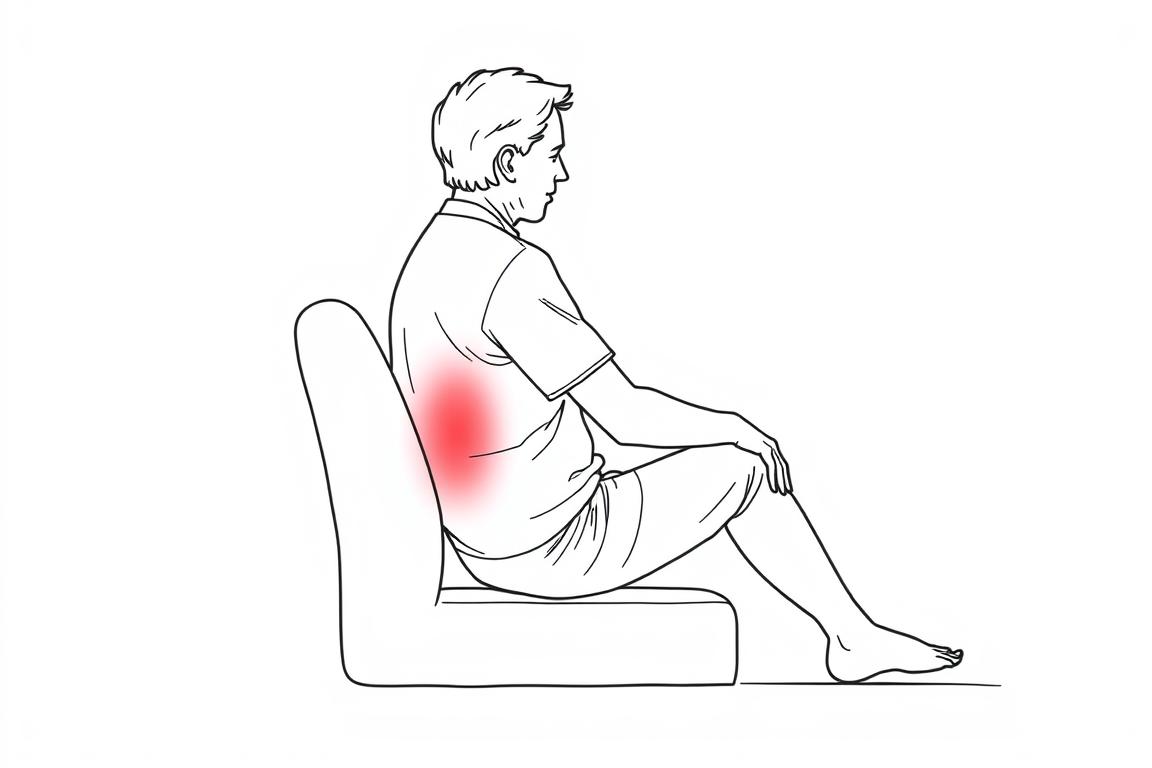Kidney stones affect approximately 12% of people worldwide during their lifetime, with recurrence rates as high as 50% within 5-10 years of the initial episode, according to the National Institute of Diabetes and Digestive and Kidney Diseases. These painful mineral deposits can cause excruciating discomfort as they move through the urinary tract, leading many sufferers to seek both conventional and alternative treatment options.
Red light therapy (RLT), also known as photobiomodulation, has emerged as a non-invasive treatment modality that uses specific wavelengths of red and near-infrared light to stimulate cellular energy production, reduce inflammation, and potentially ease pain. As interest in this technology grows, many wonder: could red light therapy offer relief for kidney stone sufferers?
This article examines the current scientific understanding of red light therapy’s potential application for kidney stones, evaluating available evidence while exploring practical considerations for those interested in this approach as a complementary treatment option.
Understanding Red Light Therapy and Its Mechanisms
Red and near-infrared light wavelengths can penetrate tissue to varying depths
Red light therapy utilizes light in the red (630-660 nm) and near-infrared (810-850 nm) wavelength ranges. Unlike UV light or laser therapy, RLT doesn’t damage tissue or create heat. Instead, it works primarily by interacting with mitochondria, the cellular powerhouses responsible for energy production.
The primary mechanism involves the absorption of photons by cytochrome c oxidase (CCO), a key enzyme in the mitochondrial respiratory chain. This interaction increases adenosine triphosphate (ATP) production, enhances cellular metabolism, and triggers several beneficial biological effects:
- Increased cellular energy production
- Reduced oxidative stress
- Decreased inflammation
- Improved blood circulation
- Enhanced tissue repair and regeneration
These mechanisms are particularly relevant to kidney health, as oxidative stress and inflammation are known contributors to kidney stone formation and associated pain. While direct research on RLT for kidney stones specifically remains limited, the therapy’s established effects on these underlying factors warrant closer examination.
Current Research on Red Light Therapy and Kidney Health
While there are currently no large-scale human clinical trials specifically examining red light therapy for kidney stones, several studies provide indirect evidence that may support its potential benefits:
Cellular effects of red light therapy that may benefit kidney health
Evidence for Inflammation Reduction
Inflammation plays a significant role in kidney stone-related pain and tissue damage. A 2021 study by de Souza Costa et al. demonstrated that photobiomodulation exerts anti-inflammatory effects on experimental inflammatory models by reducing pro-inflammatory cytokines and modulating immune cell activity.
Additionally, Yamato et al. (2013) found that low-level laser therapy at 830 nm significantly reduced inflammatory cytokines such as IL-1β and TNF-α in the kidney cortex of rats with glomerulonephritis, suggesting potential applications for various kidney conditions.
Oxidative Stress Reduction
Oxidative stress contributes to kidney stone formation and progression. Lim et al. (2010) reported that photobiomodulation at 670 nm wavelength significantly improved antioxidant enzyme activities in diabetic rat kidneys, including increased catalase activity and reduced markers of oxidative damage.
Similarly, Abdel-Magied et al. (2020) demonstrated that low-level laser therapy at 870 nm attenuated radiation-induced oxidative stress in kidney tissues, with lower levels of hydrogen peroxide and improved antioxidant enzyme activities.
Kidney Function Improvement
Perhaps most relevant to kidney stone sufferers, Ucero et al. (2013) found that laser therapy at 785 nm improved kidney function in rats with metabolic syndrome-related kidney injury. The treatment reduced blood pressure, increased glomerular filtration rate, and decreased tubulointerstitial fibrosis—all factors that could potentially benefit those with kidney stones.
While these studies provide promising insights, it’s important to note their limitations. Most research has been conducted in animal models or in vitro settings, and specific studies on kidney stones are lacking. Human clinical trials are needed to confirm these potential benefits for kidney stone patients.
Potential Benefits for Kidney Stone Sufferers
Red light therapy application to the kidney area may provide relief for some sufferers
Based on the available research and understanding of red light therapy’s mechanisms, several potential benefits may apply to kidney stone sufferers:
Pain Management
Red light therapy has demonstrated analgesic effects in various conditions. By reducing inflammation and promoting tissue repair, RLT may help alleviate the intense pain associated with kidney stones. While not a replacement for pain medication during acute episodes, regular RLT sessions might reduce overall discomfort and potentially decrease reliance on pain medications.
Reduced Inflammation
The passage of kidney stones can cause significant inflammation in the urinary tract. RLT’s anti-inflammatory properties may help reduce this inflammation, potentially easing discomfort and supporting faster recovery after stone passage.
Improved Circulation
Enhanced blood flow is another established benefit of red light therapy. Improved circulation to the kidneys could potentially support overall kidney function and aid in the natural processes that prevent stone formation or facilitate stone passage.
Oxidative Stress Reduction
Since oxidative stress contributes to kidney stone formation, RLT’s ability to reduce oxidative damage may offer preventive benefits. Regular sessions might help maintain healthier kidney tissue and reduce the likelihood of new stone formation, particularly in recurrent stone formers.
“While direct evidence for red light therapy’s effects on kidney stones is still emerging, its established benefits for reducing inflammation, oxidative stress, and improving circulation suggest potential applications worth exploring under proper medical supervision.”
It’s important to emphasize that red light therapy should be considered a complementary approach rather than a replacement for conventional medical treatment. Anyone experiencing symptoms of kidney stones should seek proper medical evaluation and follow their healthcare provider’s recommendations.
Red Light Therapy Devices for Kidney Stone Support
For those interested in exploring red light therapy as a complementary approach to kidney stone management, selecting an appropriate device is crucial. Several factors should be considered, including wavelength, power output, treatment area coverage, and overall quality.
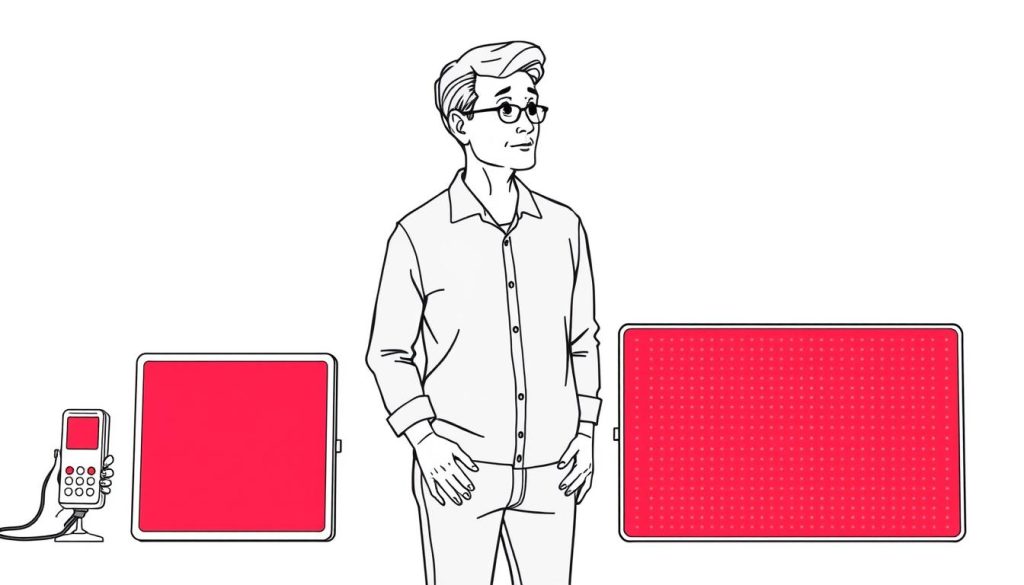
Different red light therapy device sizes offer varying coverage options for kidney area treatment
Key Features to Consider
- Wavelength range: Look for devices that offer both red (630-660 nm) and near-infrared (810-850 nm) wavelengths for optimal tissue penetration
- Power output: Higher irradiance (mW/cm²) generally means more effective treatment and shorter session times
- Treatment area: For kidney applications, panels large enough to cover the lower back area are ideal
- EMF emissions: Lower electromagnetic field emissions are preferable for safety
- Quality certifications: FDA-cleared devices offer additional assurance
Leading Red Light Therapy Panels
Several manufacturers offer quality red light therapy devices that may be suitable for kidney-related applications. Here’s how some of the leading options compare:
PlatinumLED
PlatinumLED’s Biomax series stands out for its high irradiance levels, which may allow for deeper tissue penetration. Their panels offer multiple wavelengths and are designed for professional-grade performance. The Biomax 600 provides good coverage for the kidney area, though at a premium price point.
Strengths: Exceptional power output, multiple wavelengths, durable construction
Joovv
Joovv devices are known for their modular design, allowing users to start with a smaller unit and expand over time. Their panels deliver consistent output and offer good coverage options. The Joovv Solo is a popular choice that can be positioned for kidney area treatment.
Strengths: Modular system, user-friendly design, good clinical documentation
Mito Red Light
Mito Red Light offers a range of affordable yet effective panels. Their devices provide good wavelength options at a more accessible price point. The MitoPRO 750 offers sufficient coverage for kidney applications while remaining relatively portable.
Strengths: Value pricing, solid performance, excellent customer education resources
RLT Home Options
For targeted kidney area treatment, the Total Spectrum Compact from RLT Home offers an excellent balance of coverage and convenience. With dimensions of 30 in × 12 in and 216 LEDs, this mid-size panel efficiently covers the lower back and kidney area. Its seven-wavelength mix (including 660 nm, 830 nm, and 850 nm) provides optimal penetration to kidney tissue depths.
Find Your Ideal Red Light Therapy Panel
Not sure which panel is right for your needs? Compare specifications, coverage, and pricing of leading red light therapy panels to make an informed decision.
For those seeking more comprehensive treatment, the Total Spectrum Ultra offers full-body coverage with its 64 in × 12 in dimensions and 480 LEDs. This larger panel includes a motorized stand that allows you to lie beneath it, providing consistent exposure to the kidney area without having to hold or position a smaller device.
What sets RLT Home devices apart is their combination of seven human-validated wavelengths (including 630/633 nm, 660 nm, 808/810 nm, 830 nm, 850 nm, 1064 nm, and 465 nm blue) and zero measurable EMF at treatment distance. This comprehensive wavelength range ensures optimal penetration to kidney tissue depths while maintaining safety.
Different wavelengths penetrate to varying tissue depths, with near-infrared reaching deeper kidney tissues
Practical Application: Using Red Light Therapy for Kidney Stones
If you’re considering red light therapy as a complementary approach for kidney stone management, proper application is essential for safety and potential effectiveness. Here’s a practical guide to implementation:
Proper positioning for red light therapy treatment of the kidney area
Treatment Protocol Considerations
Positioning
For kidney stone applications, position the device to target your lower back, approximately where your kidneys are located (just below your ribcage and on either side of your spine). Both sides should receive treatment for comprehensive coverage.
Distance
Maintain a distance of 6-12 inches between the device and your body for optimal light penetration without excessive heat. The exact distance may vary based on your device’s specifications, so consult the manufacturer’s guidelines.
Duration
Start with shorter sessions (5-10 minutes) and gradually increase to 15-20 minutes per treatment area. Most research suggests daily or every-other-day treatments for optimal results.
Consistency
Regular treatments are likely more beneficial than occasional sessions. Establish a consistent routine, such as daily treatments during active stone episodes or 3-4 times weekly for prevention.
Hydration
Maintain proper hydration before and after treatments, as adequate fluid intake remains essential for kidney stone management regardless of complementary approaches.
Tracking
Keep a journal of your treatments and any changes in symptoms to help evaluate effectiveness and optimize your protocol over time.
Important Safety Note: Red light therapy should never delay seeking medical attention for kidney stones. If you experience severe pain, fever, chills, vomiting, or blood in your urine, seek immediate medical care as these may indicate a serious complication requiring urgent treatment.
Safety Considerations and Contraindications
Red light therapy is generally considered safe with minimal side effects when used properly. However, certain precautions should be observed, especially when targeting the kidney area:
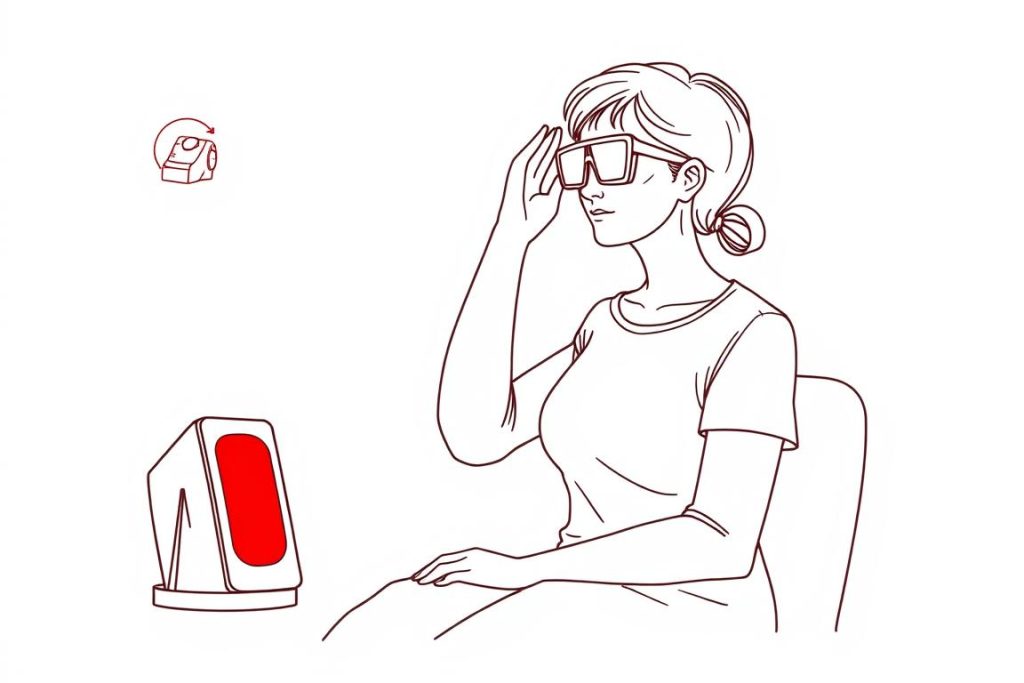
Proper safety practices for red light therapy sessions
General Safety Guidelines
- Consult with your healthcare provider before beginning red light therapy, especially if you have diagnosed kidney stones or other kidney conditions
- Follow manufacturer instructions regarding treatment duration and distance
- Avoid looking directly at the lights; consider using appropriate eye protection
- Start with shorter sessions and gradually increase duration as tolerated
- Stay hydrated before, during, and after treatments
- Discontinue use if you experience any adverse effects
Specific Contraindications
Red light therapy may not be appropriate for everyone. Exercise caution or avoid use if you have:
- Recent kidney surgery or procedures
- Active kidney infection
- Photosensitivity due to medications or conditions
- Pregnancy (kidney area treatments)
- Cancer in the treatment area
- Pacemakers or other implanted electronic devices
While red light therapy has an excellent safety profile compared to many interventions, it’s always best to err on the side of caution and consult with healthcare professionals familiar with both your medical history and this treatment modality.
Integrating Red Light Therapy with Conventional Treatments
Red light therapy is best viewed as a complementary approach rather than a replacement for conventional kidney stone management. Here’s how to effectively integrate it with standard medical care:
An integrated approach to kidney stone management may include multiple strategies
Working with Healthcare Providers
Maintain open communication with your healthcare team about your interest in red light therapy. Many physicians are becoming more receptive to evidence-based complementary approaches, especially non-invasive ones with minimal side effects like RLT.
Provide your doctor with information about the therapy and the specific device you’re considering. This transparency allows for better coordination of your overall treatment plan and ensures that all interventions work synergistically rather than at cross-purposes.
Complementary Approaches
Conventional Treatments
- Medication (pain relievers, alpha blockers)
- Increased fluid intake
- Dietary modifications
- Extracorporeal shock wave lithotripsy (ESWL)
- Ureteroscopy
- Percutaneous nephrolithotomy
Potential Complementary Approaches
- Red light therapy
- Stress reduction techniques
- Targeted supplements (as recommended by healthcare provider)
- Gentle physical activity
- Heat therapy
The optimal approach for most kidney stone sufferers will likely involve a combination of conventional medical care and carefully selected complementary strategies. Red light therapy may fit well within this integrated framework, potentially enhancing outcomes while causing minimal disruption to standard treatment protocols.
“The future of kidney stone management may lie in personalized, integrative approaches that combine the best of conventional medicine with evidence-based complementary therapies like red light therapy.”
Supporting Lifestyle Factors for Kidney Stone Prevention
While red light therapy may offer benefits for kidney stone management, it’s most effective when combined with lifestyle modifications that address underlying risk factors. Consider these evidence-based strategies alongside RLT:
Comprehensive kidney stone prevention includes multiple lifestyle factors
Hydration
Adequate fluid intake remains the cornerstone of kidney stone prevention. Aim for at least 2-3 liters of water daily, or enough to produce clear or light yellow urine. Proper hydration dilutes stone-forming substances in urine and helps flush out small crystals before they can grow into stones.
Dietary Considerations
Beneficial Approaches
- Increase fruits and vegetables (especially those high in citrate)
- Moderate protein intake
- Consider DASH diet principles
- Adequate calcium from food sources
Items to Limit
- Sodium (salt)
- Animal protein
- Oxalate-rich foods (for oxalate stone formers)
- Sugar-sweetened beverages
Dietary recommendations may vary based on your specific stone type, so work with your healthcare provider or a registered dietitian to develop a personalized eating plan that addresses your particular risk factors.
Physical Activity
Regular, moderate exercise supports overall kidney health and may help prevent stone formation. Physical activity can aid in maintaining healthy weight (obesity is a risk factor for stones) and may help stones pass more easily when they do form. Aim for at least 150 minutes of moderate activity weekly.
By combining these lifestyle approaches with red light therapy and appropriate medical care, you create a comprehensive strategy that addresses kidney stone management from multiple angles, potentially improving outcomes and reducing recurrence risk.
Did you know? According to the National Kidney Foundation, people who have had one kidney stone have a 50% chance of developing another within 5-10 years. Comprehensive prevention strategies are essential for reducing this risk.
For more detailed information on dietary approaches to kidney stone prevention, visit the National Institute of Diabetes and Digestive and Kidney Diseases resource page.
Frequently Asked Questions About Red Light Therapy for Kidney Stones
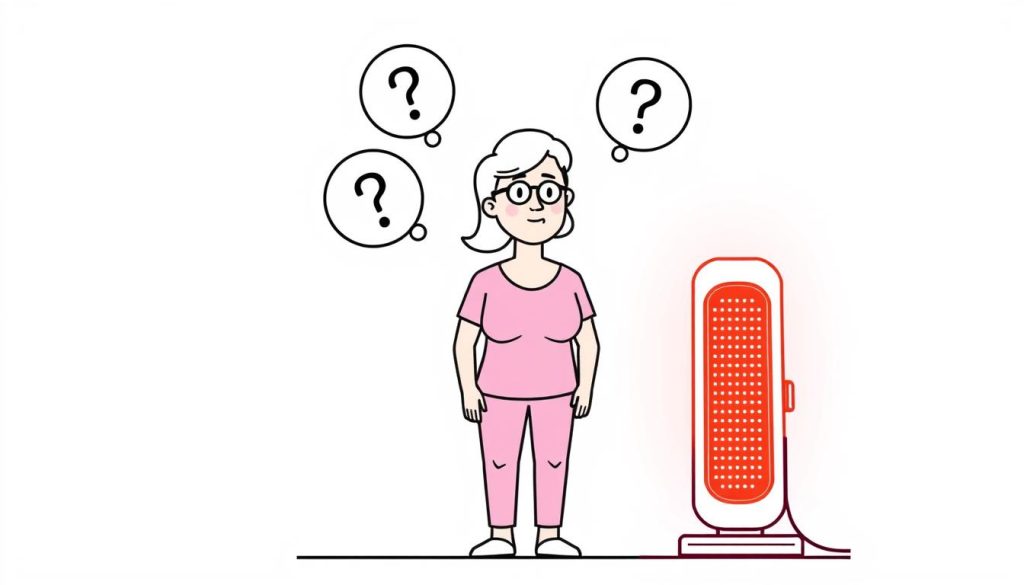
Common questions about red light therapy’s application for kidney conditions
Can red light therapy dissolve existing kidney stones?
There is currently no scientific evidence that red light therapy can directly dissolve or break up existing kidney stones. Its potential benefits lie more in reducing inflammation, managing pain, and potentially supporting overall kidney health. Conventional medical treatments remain necessary for addressing existing stones, especially larger ones.
How long does it take to see results from red light therapy for kidney-related issues?
Response times vary considerably between individuals. Some people report noticing reduced pain or inflammation within a few sessions, while others may require several weeks of consistent treatment to observe benefits. For preventive applications, effects may take longer to become apparent and would likely require ongoing maintenance sessions.
Is red light therapy covered by insurance for kidney stone treatment?
Most insurance plans do not currently cover red light therapy devices for home use, regardless of the condition being treated. Some physical therapy or pain management clinics may offer red light therapy as part of covered treatment sessions, but coverage varies widely by provider and plan. Check with your insurance company for specific coverage details.
Can I use red light therapy during an active kidney stone episode?
While red light therapy is generally safe, an active kidney stone episode requiring medical attention should be addressed by healthcare professionals first. Once stabilized, red light therapy might be used as a complementary approach for pain management or recovery, but only after consulting with your healthcare provider and never as a substitute for medical treatment during acute episodes.
What wavelengths are best for kidney applications?
Based on available research, both red (630-660 nm) and near-infrared (810-850 nm) wavelengths may offer benefits for kidney-related applications. Near-infrared wavelengths penetrate deeper into tissue and may better reach the kidneys, while red wavelengths have demonstrated benefits for inflammation and cellular function in more superficial tissues. Devices offering both wavelength ranges provide the most versatility.
Conclusion: Is Red Light Therapy Worth Trying for Kidney Stones?
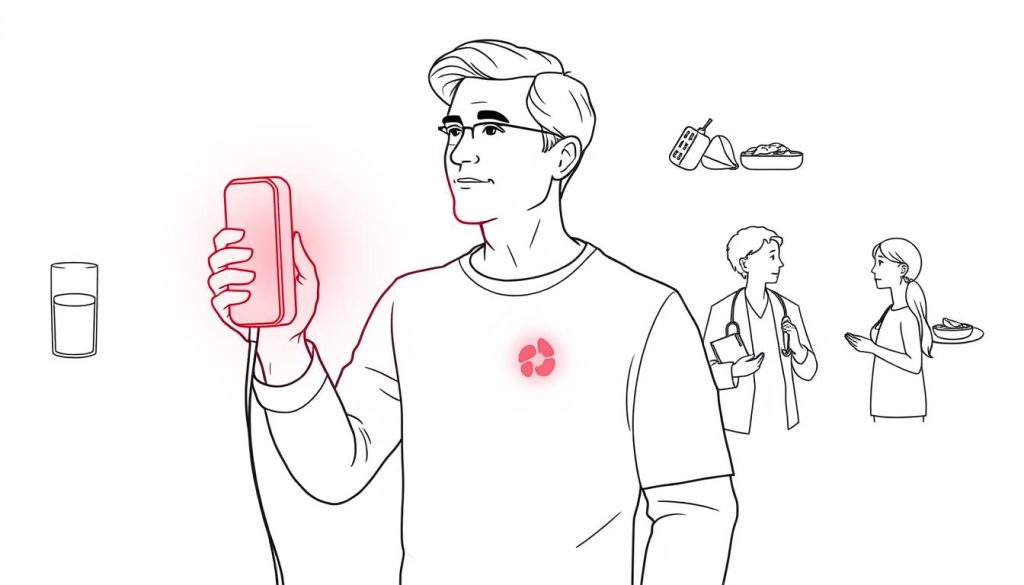
Red light therapy may complement conventional approaches to kidney stone management
The current evidence suggests that red light therapy holds promise as a complementary approach for kidney stone management, particularly for reducing inflammation, managing pain, and potentially supporting overall kidney health. While not a replacement for conventional medical care, RLT’s excellent safety profile and non-invasive nature make it a reasonable option to consider as part of an integrated treatment strategy.
For those interested in exploring this approach, investing in a quality device with appropriate wavelengths and coverage area is essential. The Total Spectrum Compact or Total Spectrum Ultra from RLT Home offer comprehensive wavelength options and sufficient coverage for kidney applications, with features like zero EMF emissions and multiple treatment modes that enhance their versatility for various health applications beyond kidney support.
Find the Right Red Light Therapy Solution
Ready to explore how red light therapy might support your kidney health? Compare leading panels to find the option that best fits your needs and budget.
Remember that the most effective approach to kidney stone management combines multiple strategies, including proper hydration, appropriate dietary modifications, regular physical activity, and medical care as needed. Red light therapy may serve as a valuable addition to this comprehensive approach, potentially enhancing outcomes while causing minimal disruption to standard treatment protocols.
As research in this area continues to evolve, we can expect more definitive answers about red light therapy’s specific benefits for kidney stone sufferers. In the meantime, those interested in this approach should maintain open communication with their healthcare providers, follow evidence-based protocols, and monitor their response to determine if red light therapy is providing meaningful benefits for their individual situation.
— David, independent RLT researcher

